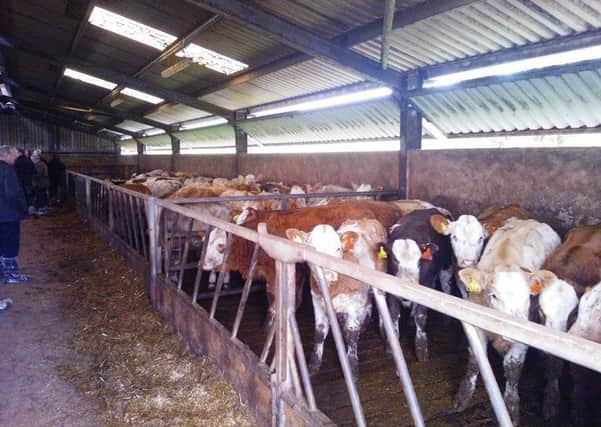DAERA Management Notes: Dairying


Slurry gases are produced in large volumes soon after starting to mix. Follow the HSENI guidelines, think through and plan all aspects of slurry mixing and handling on your farm.
Getting the most from grass
As grass is the cheapest feed, get cows grazing as soon as possible. Walk the farm and see how much grass you have. You will have more than you think! Turn cows out as soon as ground conditions allow. At turnout don’t hesitate to graze cows on a grass cover of 2500 kg dry matter per hectare (the ankle of your boot). Graze grass down to 1500 kg dry matter per hectare (the heel of your boot). Cows should go out with an edge to their appetite and should be grazed for two to three hours, with a target intake of 5 kg grass dry matter. A grazing group of 60 cows will require 300 kg of grass dry matter.
Advertisement
Hide AdAdvertisement
Hide AdAim for an initial grazing rotation of between 25 and 30 days to allow your first grazing cycle to be completed before grass covers get too heavy. A surge in growth could mean by the time you reach the end of the first grazing cycle covers are too heavy for cows to graze out cleanly, making it more difficult to maintain grass quality throughout the grazing season.
Milk from forage
Although milk prices have increased over recent months, improving milk from forage is still key to reducing costs. Getting cows grazing is the simplest way to improve milk from forage as we move into the grazing season. In most cases March grass has a higher energy value than the silage cows have been fed. Full March grazing has the potential to produce 20 litres of milk. Practically this requires you to increase the M+ in the parlour computer feed settings by 3 to 4 kg of additional milk at turnout. The few hours grazing after morning milking will save about 1.5 kg of concentrates per cow daily, replacing over half a tonne of concentrate a week for 50 cows. Continue to adjust the M+ in the parlour computer feed settings as cows move to full time grazing. In addition to the immediate savings in concentrate costs there should also be improvements in milk protein and yield.
The message is clear. Get some cows out grazing as soon as conditions allow and gradually get more cows out to grass. Adjust the M+ in the parlour computer feed settings at turnout and as cows move to full time grazing. Have your grazing rotation fully established by the third week in April.
March jobs checklist
If spreading slurry on silage ground ensure it is spread by early March. Do not spread slurry on waterlogged ground, when raining heavily or when heavy rain is forecast within the next 48 hours, on ground that has a slope of 20% or more, is frozen or covered in snow.
Advertisement
Hide AdAdvertisement
Hide AdTier 2 of the Farm Business Improvement Scheme (Tranche 1) closes for applications at 4pm on 10 March 2017.
If you applied to the EU Milk Reduction Scheme for the November 2016 to January 2017 period the claim form should be submitted to the RPA by midnight on 17 March 2017.
Complete any maintenance on cow tracks and paddock fencing in preparation for the grazing season.
Don’t forget to change time clocks at the end of the month when the hour changes.
If you need information on any of these topics, contact your local CAFRE Dairying Development Adviser.